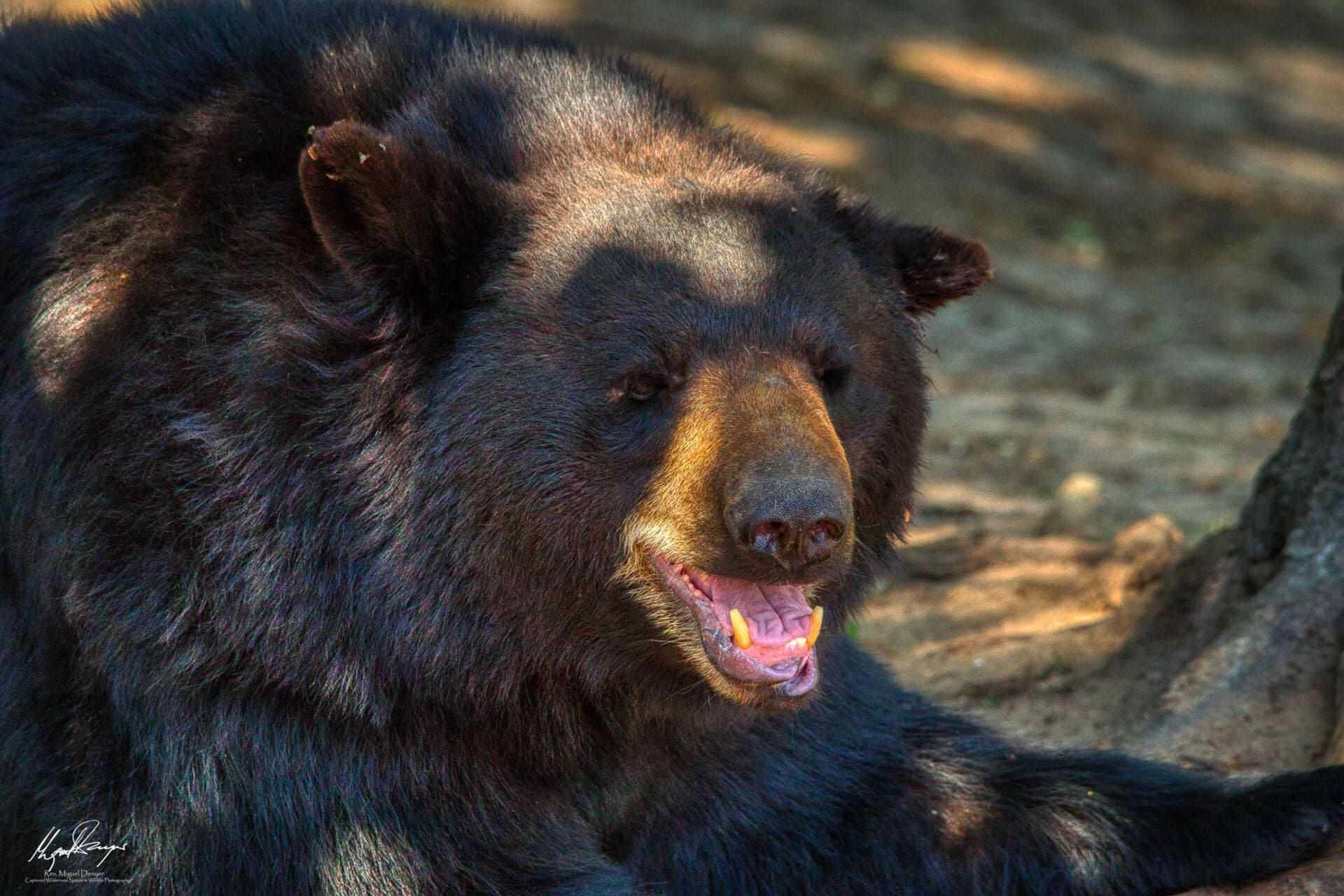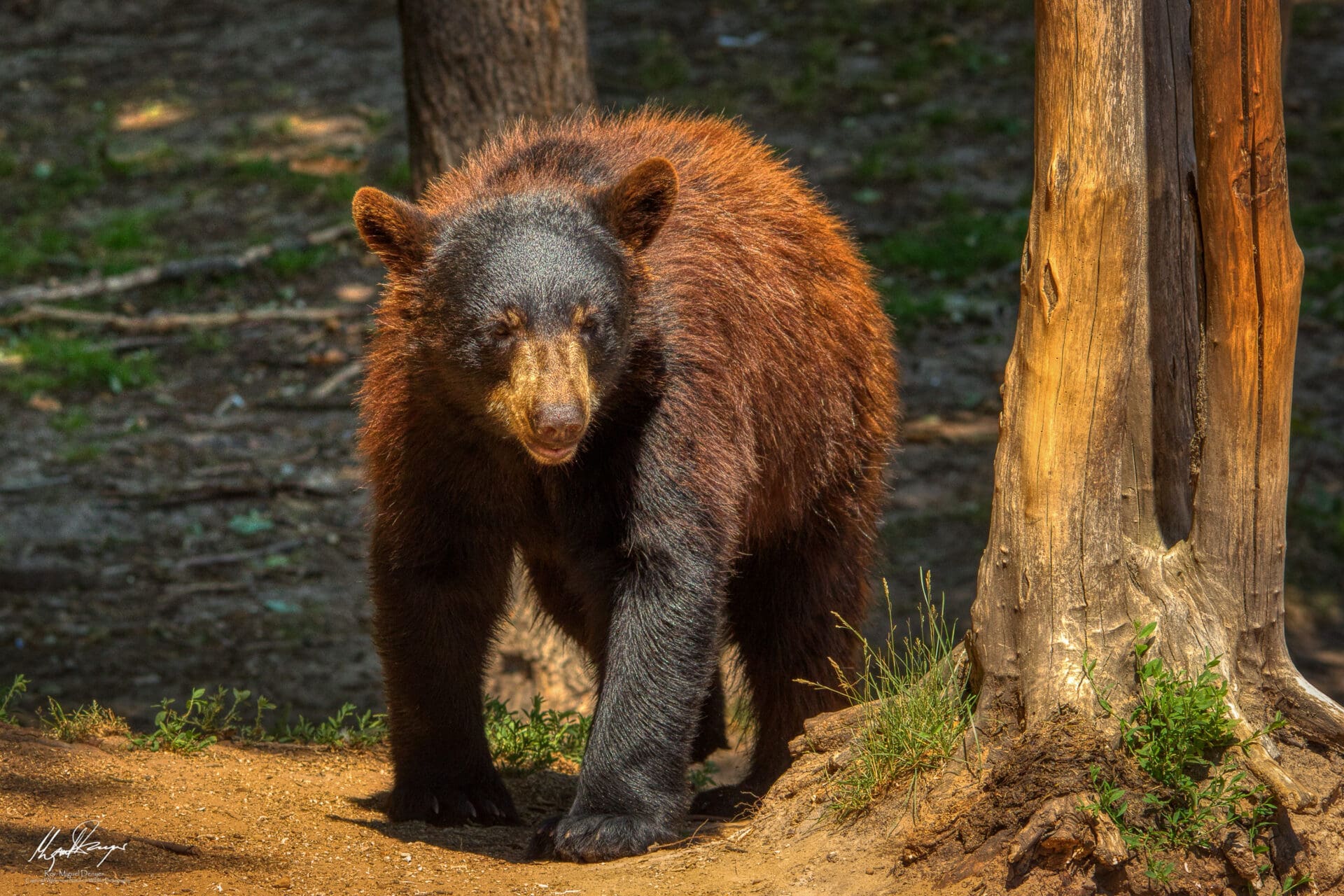The Black Bear: An Icon of North American Wilderness
The Black Bear (Ursus americanus) is one of North America’s most familiar and adaptable large mammals, known for its widespread presence and versatile nature. These bears are primarily found in forested areas, ranging from dense woodlands to swamps and mountainous regions. They thrive in habitats with ample vegetation and water sources, as these environments provide both food and shelter. Black bears are highly adaptable and can also be found in suburban areas where human encroachment has fragmented their natural habitats.

The diet of the Black Bear is omnivorous and highly varied, reflecting its adaptability. These bears consume a wide range of foods, including fruits, nuts, berries, insects, and small mammals. In the spring, they often eat tender grasses and shoots, while in the summer and fall, they gorge on berries and nuts to build up fat reserves for winter. Black bears are also known to scavenge carcasses and occasionally prey on young deer or livestock. Their opportunistic feeding habits enable them to thrive in diverse environments and make them resilient to changes in food availability.
The geographical range of the Black Bear extends across much of North America. They are found from northern Canada and Alaska down to northern Mexico, and from the Pacific to the Atlantic coasts. Black bears are particularly abundant in regions with extensive forest cover, such as the Appalachian Mountains, the Rocky Mountains, and the forests of the Pacific Northwest. Their ability to adapt to different climates and habitats has allowed them to maintain stable populations across their range.

Physically, Black Bears are robust and powerful animals. Adults typically weigh between 200 and 600 pounds, with males being larger than females. They have a stocky build, with a short, shaggy coat that varies in color from jet black to dark brown, and even cinnamon or blond in some regions. Black bears have a distinctive straight facial profile, small eyes, rounded ears, and a short tail. Despite their size, they are excellent climbers and swimmers, and can run at speeds up to 30 miles per hour.
The Black Bear plays a significant role in North American ecosystems, helping to disperse seeds and maintain healthy forests. Their presence is a testament to the health of their habitats. Understanding the behavior and ecology of Black Bears is crucial for their conservation and for mitigating human-wildlife conflicts. As adaptable and resilient creatures, Black Bears are a fascinating subject for wildlife enthusiasts and a symbol of the wilderness they inhabit.


